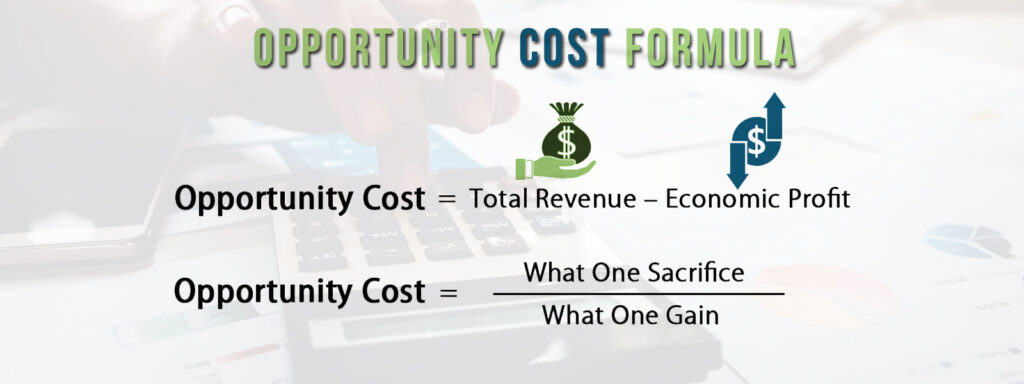It helps you measure what you are giving up when you choose one option over another. Whether you are debating between investing in new software or sticking with spreadsheets, calculating opportunity cost helps you choose the path that offers more value.
If you are still unsure, let us help you understand through an example. Suppose a company spends hours or even weeks processing expense reports manually. On the other hand, they choose an alternative and opt for automating the process that saves long hours of growth-driving tasks.
This blog will give you a complete picture of how to calculate opportunity cost, break down the formula, and see why it is beneficial for firms across the world.
What is Opportunity Cost & Why It Matters in Expense Management
As we explained above, opportunity cost is the value of the choice you didn’t make. In other words, it is about recognizing that every decision in business comes with a hidden price tag. If you choose one path, you will have to give up on the other. And that is why knowing opportunity cost is important in expense management, especially for companies that are always balancing budgets, employee needs, and long-term growth.
So, how to compute opportunity cost? Here’s a simple equation for opportunity cost:
Opportunity Cost = Return on Best Foregone Option – Return on Chosen Option
This formula for opportunity cost helps businesses boil down to one choice that is worthy enough. For example, choosing manual expense reports may seem free, but the hours and efforts lost to errors and approvals are the real cost. But with the given opportunity cost formula, one can see if they should or should not switch to automation.
And when we talk about automation, we can not move forward without mentioning ExpenseVisor. It is a finance management software that helps businesses reduce wasted time, improve compliance, and give finance teams visibility into spending. You can have a look at our blog Optimizing Business Finances with Expense Visor Expense Report Policies. This will give you deeper insights about how ExpenseVisor can help with expense report policies.
How to Calculate Opportunity Cost in Your Organization
Knowing about opportunity cost isn’t about applying a theory; rather, it is a practical tool that any business can use to make better financial moves. The key is to approach it step by step, using the opportunity cost formula to put real numbers behind every choice. Here’s how:
Identify your Options
The first and most important step is to know your options. Begin by outlining your two or more available alternatives that you’d be comparing.
To make things easier for you, let’s consider an example of ExpenseVisor. Should your finance team stick to the manual method, like a spreadsheet, or move to an automated system like ExpenseVisor?
Estimate the Returns
The second step is to think about profit, but beyond the direct cost. This means that if you stick to a manual method like a spreadsheet, you might end up saving a few bucks. But in the longer run, you’d be paying a bigger price in the form of wasted hours, mistakes, and slowed approvals. On the other hand, if you opt for ExpenseVisor, you’ll be spending a few bucks on the subscription, but it will free up your valuable time, ensure compliance, and prevent overspending.
Apply the Formula
The standard equation for opportunity cost is:
Return on Best Foregone Option – Return on Chosen Option
Consider that if your employees spend 30 hours every month managing expenses manually, that makes up to £900 of labor. But if you choose ExpenseVisor, it will reduce that to £150 of labor with a subscription cost of £200. The total return from automation is £550. The opportunity cost of not switching? Lost productivity is worth hundreds of dollars every month.

Note that the mentioned subscription cost is hypothetical and might be different in a real case scenario, but rest assured, opting for ExpenseVisor will turn out to be a smart financial move.
Evaluate the Results
By calculating opportunity cost, you can see that sticking to manual reporting appears to be affordable on the surface, but could be more expensive in the long run. ExpenseVsior gives organisations a clearer picture of these short and long-term benefits, making choices that support efficiency and growth.
The more your finance team tracks and measures, the easier it becomes to apply the formula consistently. ExpenseVsior’s reporting tools and analytics easily turn raw expense data into insights you can actually rely on. You can use the calculated data to compare opportunity costs across departments, vendors, and policies.
Common Mistakes When Calculating Opportunity Cost
Knowing how to calculate opportunity cost can give your organisation a big advantage, but you need to ensure you avoid the usual traps. Too many teams rush into calculating opportunity cost without solid data, which can flip the results and lead to poor decisions.
Here are a few common mistakes and how ExpenseVisor can help you sidestep them:
Ignoring Hidden Costs
A classic cost of opportunity example is comparing ‘free’ manual reporting against automation. On the surface, manual looks economical, but the hours lost in approvals and errors prove otherwise. The opp cost formula makes these hidden losses obvious, and ExpenseVisor captures the data needed to see them clearly.
Thinking Short-Term Only
An example of opportunity is selecting the lowest-cost vendor today, even if delays and compliance would cost your reputation tomorrow. With ExpenseVisor, you get to see the bigger picture so that you always make the right decision.
Incomplete or Inaccurate Data
If you don’t know how to compute opportunity cost with real numbers, your analysis collapses. That’s why ExpenseVisor automates receipt capture, validations, and vendor insights. This way, your equation for opportunity cost isn’t based on guesswork.
Never Reviewing Decisions
Opportunity costs change as markets and priorities change. If you stick to one calculation forever, you’ll miss new risks. ExpenseVisor’s real-time analytics make the opportunity cost formula something you can apply again and again, so your business never falls behind.
Key Takeaway
Every decision in business comes with a price tag, even if it is not visible right away. That’s the true essence of opportunity cost – the value of the path you don’t choose. By knowing how to find the opportunity cost and applying the opportunity cost formula, organizations can move beyond guesswork and make accurate data-driven decisions.
However, to ensure accurate calculations, you need reliable data. Here’s when ExpenseVisor becomes a game-changer. Automated reporting, vendor insights, and real-time analytics give you the visibility you need to spot trade-offs and avoid costly mistakes.
In the end, knowing how to compute opportunity cost is about more than formulas; it’s about building a smarter way to manage expenses. With ExpenseVisor, you’re not just cutting costs, you’re capturing opportunities your competitors may be missing.




